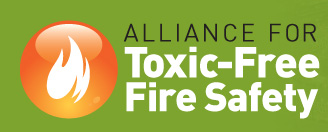  |
|||
Fire Retardants Abound in Baby Products: ES&T’s Top Science Paper 2011Environmental Science & Technology Kellyn BettsEnviron. Sci. Technol., Article ASAPDOI: 10.1021/es300730dPublication Date (Web): March 5, 2012Copyright © 2012 American Chemical Society Related Paperhttp://pubs.acs.org/doi/abs/10.1021/es2007462 http://cen.acs.org/articles/89/i21/Fire-Retardants-Baby-Products-Pose.html http://pubs.acs.org/isubscribe/journals/cen/88/i26/html/8826news1.html http://pubs.acs.org/isubscribe/journals/cen/88/i24/html/8824news4.html http://pubs.acs.org/doi/abs/10.1021/es902480t http://pubs.acs.org/doi/full/10.1021/es802145r http://pubs.acs.org/doi/pdf/10.1021/es087042o http://pubs.acs.org/doi/pdf/10.1021/es0626537 The fire retardants that can escape from consumer products and end up in people’s bodies have formed the central focus of the research career of Heather Stapleton (pictured above with her children). So it is no surprise that during her first pregnancy, in 2009, Stapleton, of Duke University’s Nicholas School of the Environment, began investigating whether the polyurethane foam cushioning materials used inside baby products contained the retardants. She discovered that suspected and known carcinogens appeared widely in car seats, changing table pads, sleep positioners, mattresses, nursing pillows, and other products (Environ. Sci. Technol., DOI: 10.1021/es2007462). The results made a splash on the CBS Evening News on May 18, 2011, the same day they appeared in ES&T. The paper also received coverage by Chemical & Engineering News, the New York Times, and many other news outlets. Prior to the paper’s publication, little information was available about the identity or concentration of the retardants that manufacturers add to foam in baby products to prevent or slow burning. The groundbreaking paper revealed that infant products contain high levels of multiple retardant chemicals, says Linda Birnbaum, director of the National Institute of Environmental Health Sciences. The compounds include one at levels that may exceed federal recommendations and another banned as a persistent, bioaccumulative, toxic chemical. The retardants pervade products that many babies spend hours in contact with during the first months of their lives, she says. The paper prompted California to amend its fire retardant statute. It now exempts some children’s products, including strollers, infant carriers, and nursing pillows, from having to meet its strict flammability standards. Many companies formulate all of their U.S. products to meet California’s standard, Stapleton says. The paper’s coauthors include researchers well-known for work on fire retardants. Arlene Blum of the University of California, Berkeley, was the lead author of the 1978 paper that led to a U.S. ban on a mutagenic chemical that was widely used in children’s pajamas (Science, DOI: 10.1126/science.684422). In the 2011 ES&T study, she recruited volunteers from 13 states to “biopsy” samples from 101 infants’ and children’s products. Tom Webster of Boston University’s School of Public Health helped characterize how infants and children would be exposed to the retardants the team found. Susan Klosterhaus of the San Francisco Estuary Institute helped design the study. The team also included Saskia van Bergen, of the East Bay Municipal Utility district; Ellen Cooper, a postdoctoral researcher who works with Stapleton; and Alex Keller, a Duke undergraduate. The team detected fire retardants in foam from 80 of the 101 products. Most frequently, the team found tris (1,3-dichloroisopropyl) phosphate (TDCPP) in the products. Manufacturers phased out use of TDCPP in children’s pajamas in the 1970s after Blum and her coauthors raised concerns about mutagenicity (Science, DOI: 10.1126/science.347576). Recent tests suggest that TDCPP may also have neurotoxic properties (Toxicol. Appl. Pharmacol., DOI: 10.1016/j.taap.2011.01.005). The researchers found the retardant in 36% of the children’s products at levels of up to 12% by weight of foam. Though they did not directly measure infants’ exposure, the researchers estimated that exposure to TDCPP may exceed the Consumer Product Safety Commission’s acceptable daily intake levels. In a written statement, the consumer agency did not address the study’s exposure estimates but commented that TDCPP “may pose a significant health risk to consumers.” The researchers also detected eight other flame retardant chemicals at levels of milligrams per gram of foam. Among these are the compounds associated with the fire retardant mixtures known as Firemaster 550 flame and PentaBDE. The Stockholm Convention on Persistent Organic Pollutants banned PentaBDE in 2009, and recent research has linked children’s exposure to some of its compounds to neurodevelopmental impairments (Environ. Health Perspect., DOI: 10.1289/ehp.0901340) and other health concerns (Epidemiology, DOI: 10.1097/01.ede.0000362982.21438.3d). Because gas chromatography and mass spectrometry data suggested that some of the flame retardants may have decomposed during the primary analysis, Stapleton’s colleague Lee Ferguson assisted in a follow-up analysis using high-performance liquid chromatography coupled with high resolution mass spectrometry. The researchers thereby confirmed the presence in some products of two chlorinated organophosphate flame retardants they had never seen before. One of these, a flame retardant known as V6, contains tris (2-chloroethyl) phosphate (TCEP) as an impurity. TCEP is considered a carcinogen. This is Stapleton’s second ES&T best paper award. She was also honored for a 2005 paper on polybrominated diphenyl ether (PBDE) retardants in dust and dryer lint (Environ. Sci. Technol., DOI: 10.1021/es0486824). The authors declare no competing financial interest. |
|||




